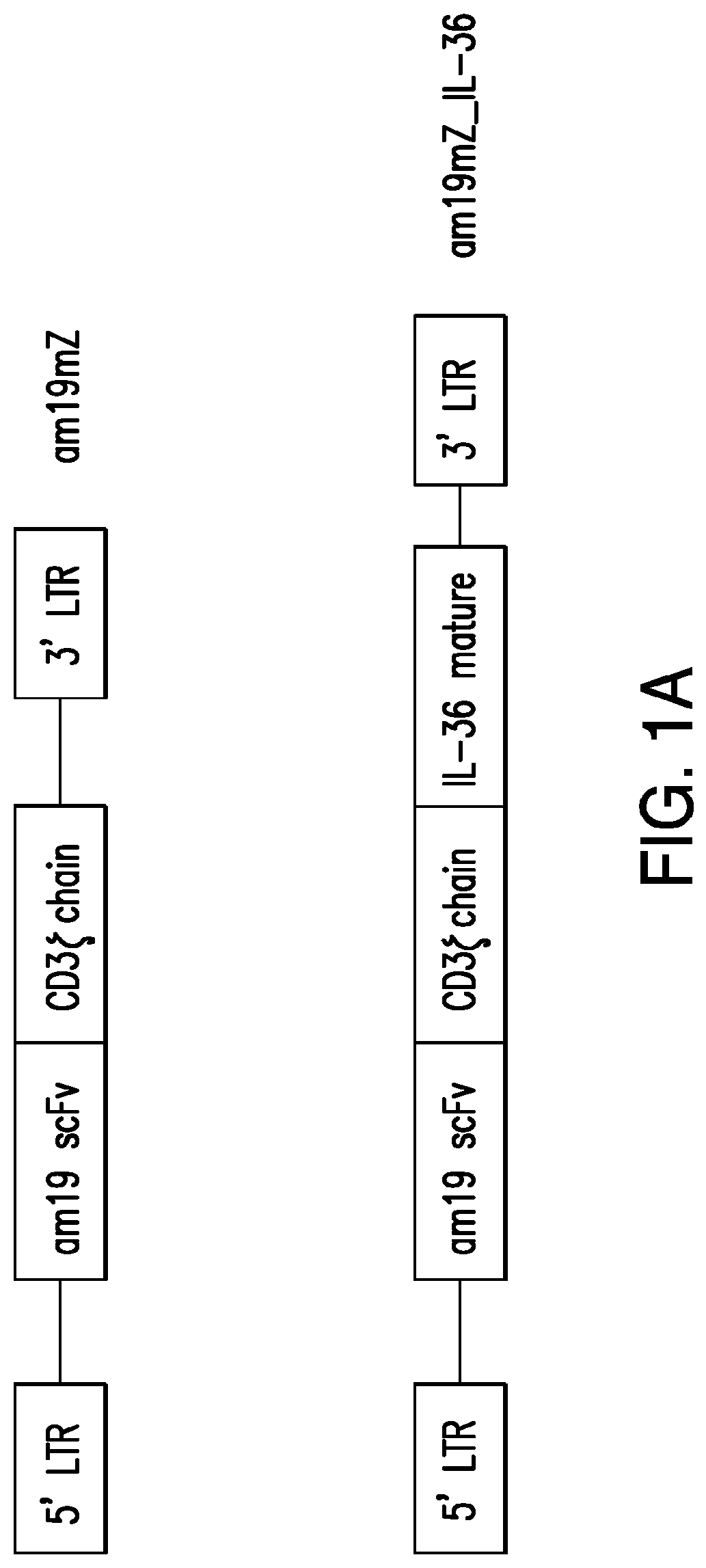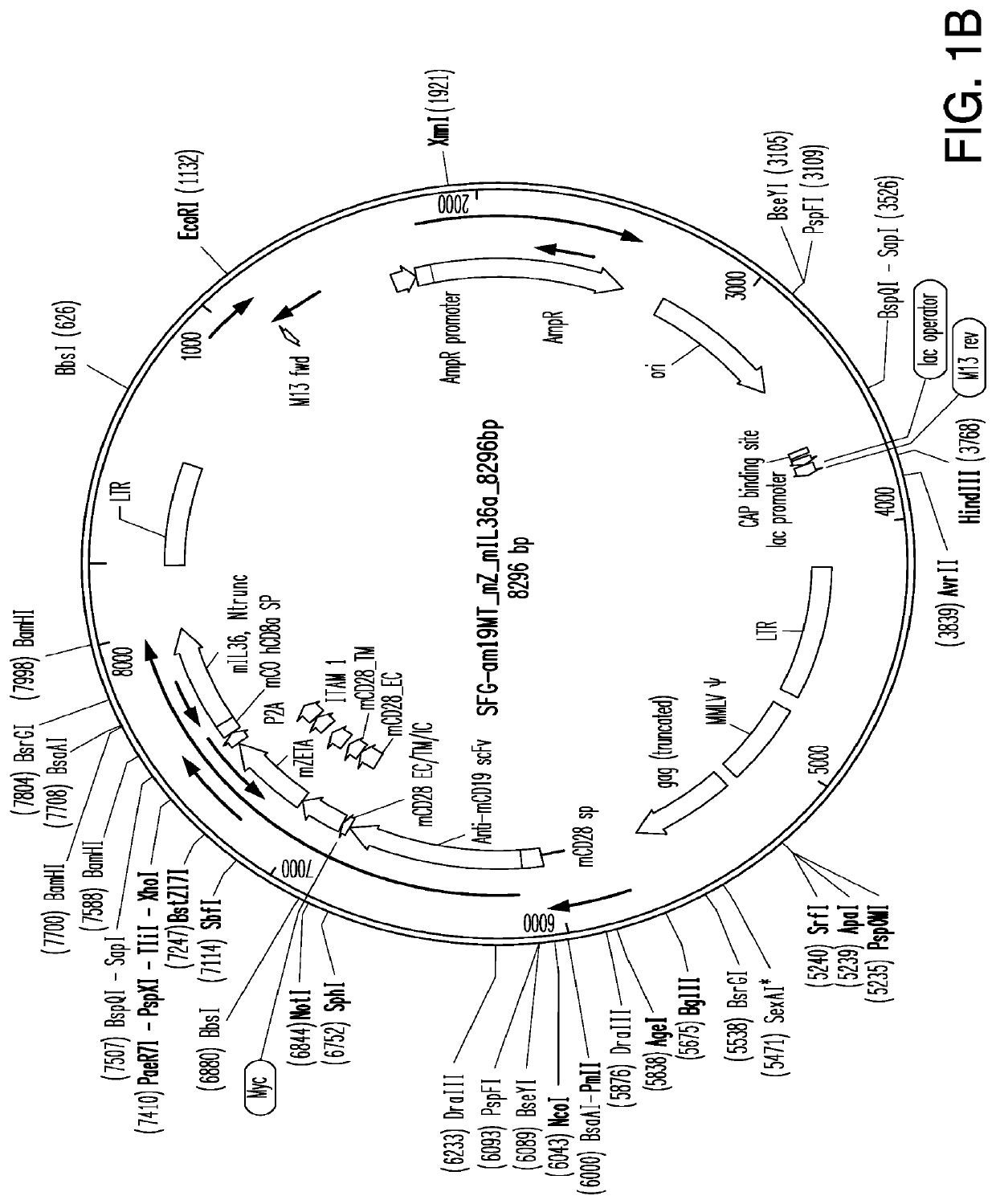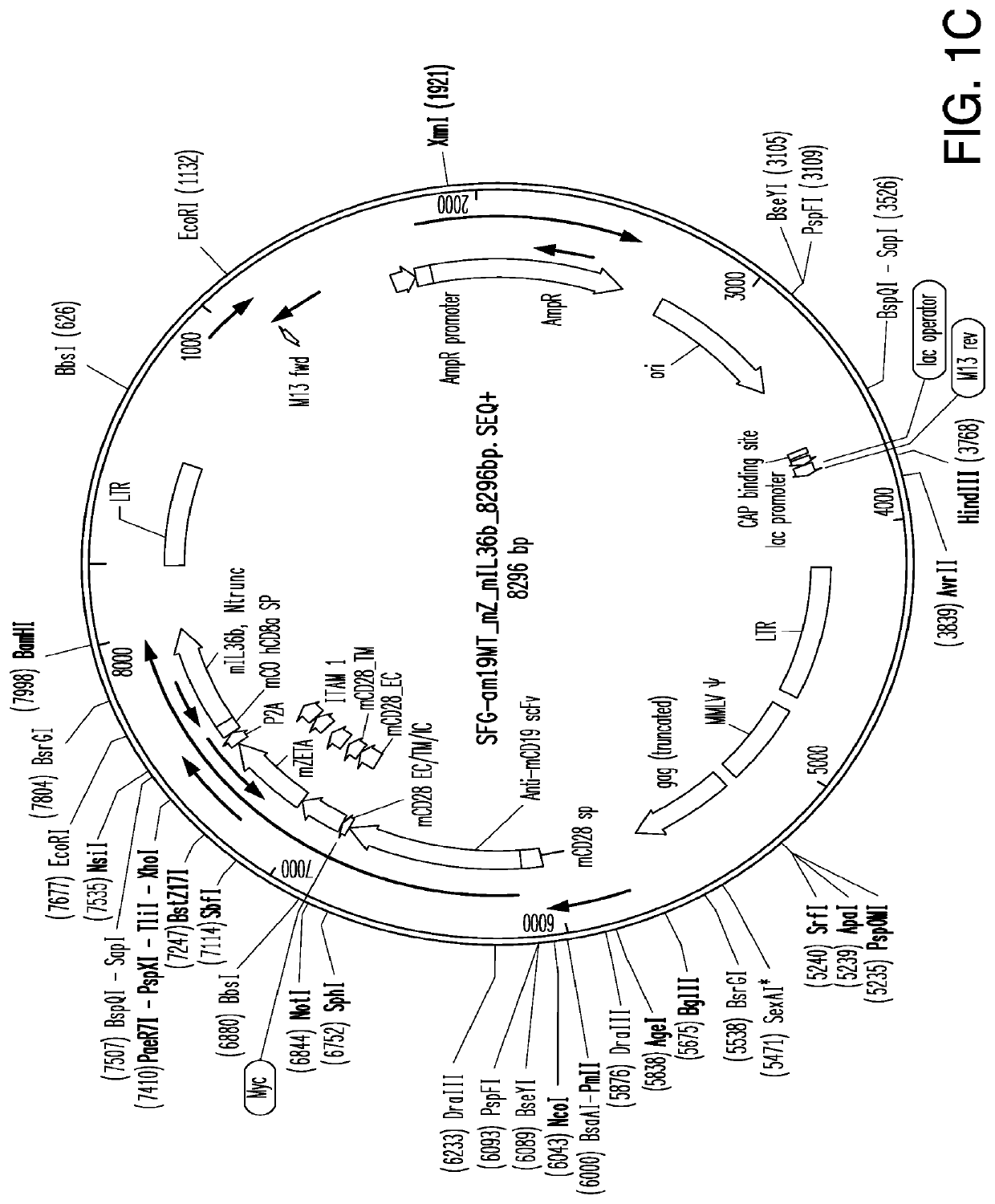Il-36 secreting immunoresponsive cells and uses thereof
a technology of immunoresponsive cells and secretion, applied in the field of il-36 secreting immunoresponsive cells, can solve problems such as the challenge of the microenvironment, and achieve the effects of promoting the secretion of il-36, enhancing an immune response, and increasing anti-tumor cytokine production
- Summary
- Abstract
- Description
- Claims
- Application Information
AI Technical Summary
Benefits of technology
Problems solved by technology
Method used
Image
Examples
example 1
in-36 (IL-36) Secreting CAR-T Cells
[0251]Introduction
[0252]Genetically modified T cells expressing a first-generation anti-CD19 CAR and a secretable IL-36 polypeptide were generated. The IL-36-secreting CAR-T cells presented improvements when compared to a control anti-CD19 CAR-T cells that do not comprise a secretable IL-36 polypeptide. The IL-36-secreting CAR-T cells exhibited prolonged survival curves in murine models.
[0253]Results
[0254]CAR Constructs
[0255]Murine anti-CD19 CAR constructs with or without a secretable murine IL-36 polypeptide were produced / constructed in SFG retroviral vector backbone e.g., am19mZ and am19mZ_IL-36, as shown in FIG. 1A. FIG. 1B shows the construct of first-generation anti-mouse CD 19 myc-tag CAR comprising a constitutively-secreted murine IL-36 alpha, wherein the murine IL-36 alpha has the amino acid sequence set forth in SEQ ID NO: 30. FIG. 1C shows the construct of first-generation anti-mouse CD 19 myc-tag CAR incorporating constitutively-secreted...
example 2
[0265]Syngeneic IL36-Gamma Secreting Murine CAR T Cells Improved Survival in Tumor-Bearing Mice.
[0266]8-12 week-old C57BL / 6 mice were inoculated with 1 million mouse CD19+EL4 tumor cells (EL4-CD19) via tail vein injection. On the following day, the mice received (without getting any pre-conditioning chemotherapy): no CAR T cells (untreated), 2,500,000 m19m28mz (syngeneic anti-mouse CD19 CD28-based second generation CAR T cells), 2,500,000 m19mz-IL36Y (syngeneic anti-mouse CD19 first-generation IL36-gamma secreting CAR T cells) or m19m28mz-IL36Y (syngeneic anti-mouse CD19 CD28-based second generation IL36-gamma secreting CAR T cells) the following day. Survival was followed as shown in FIG. 7. The results demonstrated that both first-generation and second-generation IL36-gamma secreting CAR T cells significantly improved survival and induced long-term remissions as compared to non-IL36-gamma secreting CAR T cells. These results indicated that IL36-gamma secreting CAR T cells were mor...
PUM
| Property | Measurement | Unit |
|---|---|---|
| temperatures | aaaaa | aaaaa |
| temperatures | aaaaa | aaaaa |
| temperatures | aaaaa | aaaaa |
Abstract
Description
Claims
Application Information
 Login to View More
Login to View More - R&D
- Intellectual Property
- Life Sciences
- Materials
- Tech Scout
- Unparalleled Data Quality
- Higher Quality Content
- 60% Fewer Hallucinations
Browse by: Latest US Patents, China's latest patents, Technical Efficacy Thesaurus, Application Domain, Technology Topic, Popular Technical Reports.
© 2025 PatSnap. All rights reserved.Legal|Privacy policy|Modern Slavery Act Transparency Statement|Sitemap|About US| Contact US: help@patsnap.com



